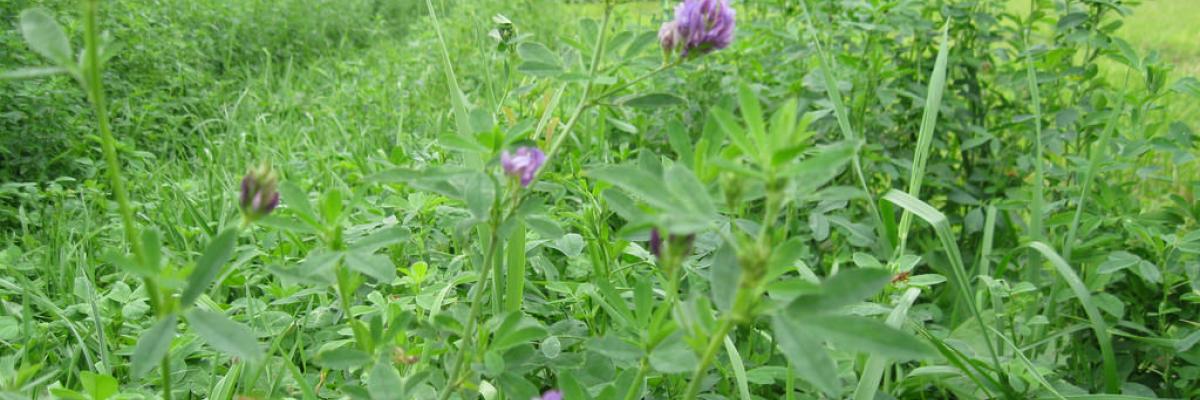

Digging the Dirt on Lower Smite Farm
View the website
This report is one of a series by the Soil Association explaining methods and benefits of improving soil health. It follows Caroline Corsie in her quest to improve soil health while providing habitat for pollinators and farmland birds on a mixed organic Wildlife Trust farm, with the help of Higher Level Stewardship support. The report outlines the ‘7 ways’ she has invested in soil, describing how a combination of companion planting, green manure crops, and careful application of green waste compost and farmyard manure has improved organic matter content by 20% over 5 years. Caroline also provides insights on an innovative crop rotation, experimenting with shallow cultivating, growing lucerne (alfalfa) for hay, and long-standing beds of herbal leys and pollinator-friendly winter crops under-sown with green manure, which minimises heavy machinery usage and keeps the ground covered for much of the year.
The report describes a number of ways to invest in both soil and wildlife:
- Diverse and long-term crops of herbal leys provide effective green manure, enrich the soil while providing food for pollinators, and support birds over much of the year.
- Under-sowing crops helps ensure soil is covered and minimises disturbance from heavy machinery.
- Growing a complex mix of plants (particularly incorporating phacelia) prolongs the availability of pollen and nectar throughout the year.
- Lucerne needs a good seed bed to get started and isn’t very productive in the first year, but, when sown with other clovers, subsequently produces a high yield.
- Lucerne enriches the soil by fixing nitrogen, can be grazed directly by sheep, or cut for high quality haylage.
- Shallow cultivation with discs is less invasive on the soil than ploughing and has helped reduce the couch grass problem on some of the fields.
- Experimentation with green waste compost and manure from nearby cattle farms has increased soil organic matter, raised the soil pH, and reduced the couch grass problem.
- By planting deep rooting lucerne and chicory in herbal ley seed mixes, the soil structure has become less compacted.
- Using sheep to graze the winter wheat growth in the rotation has helped control black grass.
Also see 'Digging the Dirt on Honeydale Farm' and 'Digging the Dirt on Curlew Call Farm'
